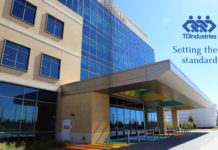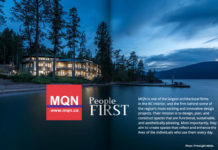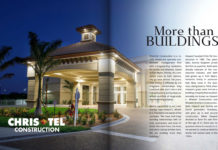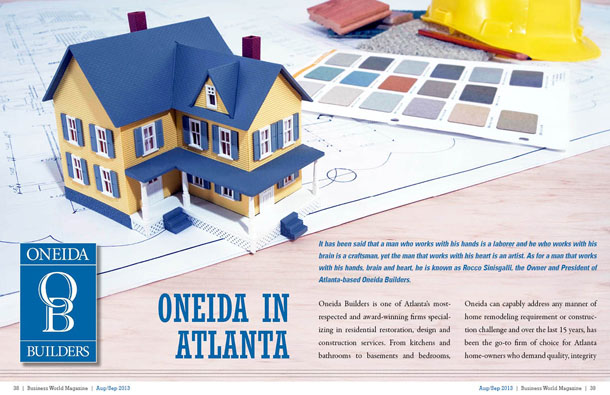

Edwin Cole once said, “Men are limited by the knowledge of their minds, the worth of their characters and the principles upon which they are building their lives.†For those whose professional lives are devoted to building, one trade association has served to ensure there are no limits, not only in term of knowledge, but also in regards to opportunities. For more than seventy years, this association has provided the advocacy, resources and educational programs that promote principals for achieving both success and sustainability.
From its headquarters in Washington, D.C., the National Association of Home Builders (NAHB) serves as the leading authority on America’s housing industry and since the 1940s, has consistently worked to enhance the national environment with respect to housing, homeownership and practices within the field of residential building. As a federation comprised by more than 800 state and local associations, the NAHB collectively represents more than 140,000 members nationwide, from home builders and remodelers to a range of associated enterprises relating to sales, financing, manufacturing or the providing of building supplies. The builders affiliated with the NAHB’s annually construct as much as 80% of the single-family and multifamily homes built in America, but beyond serving as the voice of these in the industry, the NAHB actually represents a much wider range of interest through its efforts to ensure that everyone in this country has access to safe, decent and affordable housing, whether they are purchasing or renting a home.  To further that mission, the NAHB offers a wide range of business-related services to its members as well as other home builder associations, organizes the largest of tradeshows, forums and awards programs relating to the industry, advocates on behalf of members on Capitol Hill when laws or policies are proposed for enactment, and collaborates with a number of federal agencies on regulations or codes which affect the housing industry. NAHB affiliates include: Home Innovation Research Labs (which develops, tests and evaluates new materials and methods to improve the integrity and affordability of housing); the Home Builders Institute (a workforce development division that develops and administers educational and job training programs); and The National Housing Endowment (a non-profit initiative aimed at helping the housing industry develop more effective approaches to home building, enhancing education and training of future builders and increasing the body of knowledge on housing issues).
In terms of issues and trends within the industry, green building practices have elicited significant emphasis from the NAHB. More than six years ago, the NAHB partnered with the International Code Council to create the first nationally-recognizable standard definition of green building, a process that resulted in the ICC 700 National Green Building Standard, the first (and only) residential green building rating system to undergo the full consensus process and achieve approval from the American National Standards Institute. Originally published in 2009, the system was reviewed and updated last year. The 2012 National Green Building Standard ultimately raised the bar on energy efficiency requirements, revolutionized the manner in which renovations and remodeling projects are treated through the standard, incentivized aspects in development and lot design, and effected changes that principals believe make the standard now easier to understand and implement. These enhancements will reportedly better enable the standard’s increased penetration throughout the industry.
To that point, NAHB’s Senior Program Manager for Green Building Kevin Morrow says there have been more than 18,000 housing projects which have achieved certification since the standard was introduced, yet more than 55,000 projects “are in the process†of being certified.
Morrow says based on feedback the NAHB has gleaned from member surveys, it anticipated that by 2016, more than a third of new housing construction will potentially conform to the NAHB’s green standard. Morrow says builders, as well as homeowners, are increasingly seeking means to better understand the benefits of green building, which makes sense because sustainability has come to mean much more than it did in years past when it was viewed as simply being environmentally friendly.
Today, Morrow says sustainability speaks not only to eco-sensitivity, but also the way a house performs. “Green, in terms of the lower environmental impact, isn’t always the goal… the goal is performance,†says Morrow. For homeowners, improved performance has proven to provide greater durability, greater quality and greater economic benefits born from lower utility costs achieved from the conservation of energy and water. “There’s real premium associated with a green home versus a conventional code-compliant home,†says Morrow.
For builders, Morrow says it has provided new means to promote craftsmanship and expertise. “Those that do it successfully are using green building practices to distinguish themselves in the market place,†he says. In this capacity, Morrow says builders are have done more to foster understanding and acceptance of the practices, thereby leading change in the industry more so than consumer demand. And in many cases, the general public is still just beginning to understand and appreciate the values in being green. Of course, in other cases, there are enterprises involved in the housing industry that could benefit from a little catching-up too. In this regard, Morrow uses an example involving valuations of conventional cars versus hybrid models. Today, side by side price comparisons will reflect greater value in the hybrid model due to its fuel efficiency and imparting of cost savings over its lifecycle. The industry has yet to fully realize similar premium valuations with respect to green homes. Morrow says the NAHB continues to provide education and work with groups such as those within multiple listing services so they might better understand the value of high performance homes. That work appears to be paying off too. Earlier this year, the Appraisal Institute, the nation’s largest professional association of real estate appraisers, updated forms to now help analyze and calculate values of energy efficient home features. This move expanded on the Institute’s 2011 Residential Green and Energy Efficient Addendum utilized as an optional addendum to Fannie Mae Form 1004 which has been the most widely used valuation model used in mortgage lending practices. The new updated addendum reflects input from the U.S. Green Building Council as well as the National Association of Home Builders. The Appraisal Institute is also continuing to add educational programming to further assist appraisers in identifying and assessing appropriate valuations for green building, and Morrow indicates these are positive steps that help promote clearer understanding and opportunities in the market.
Morrow says it is essential that homeowners contract with professionals who genuinely understand what sustainability means and have been trained to approach it in a systemized manner, saying that green building isn’t simply about energy efficiency, water conservation, better insulation, technology integration or any other singular nuance. As a system, Morrow says sustainability is represented in the way all the separate pieces work together to reduce impact on the environment, increase performance and create greater value for a homeowner.
To learn more about the ICC 700 Green Building Standard and how to become certified as a green builder, or details on the variety of other services and programs offered by the National Association of Home Builders, visit the NAHB website at www.nahb.org.







